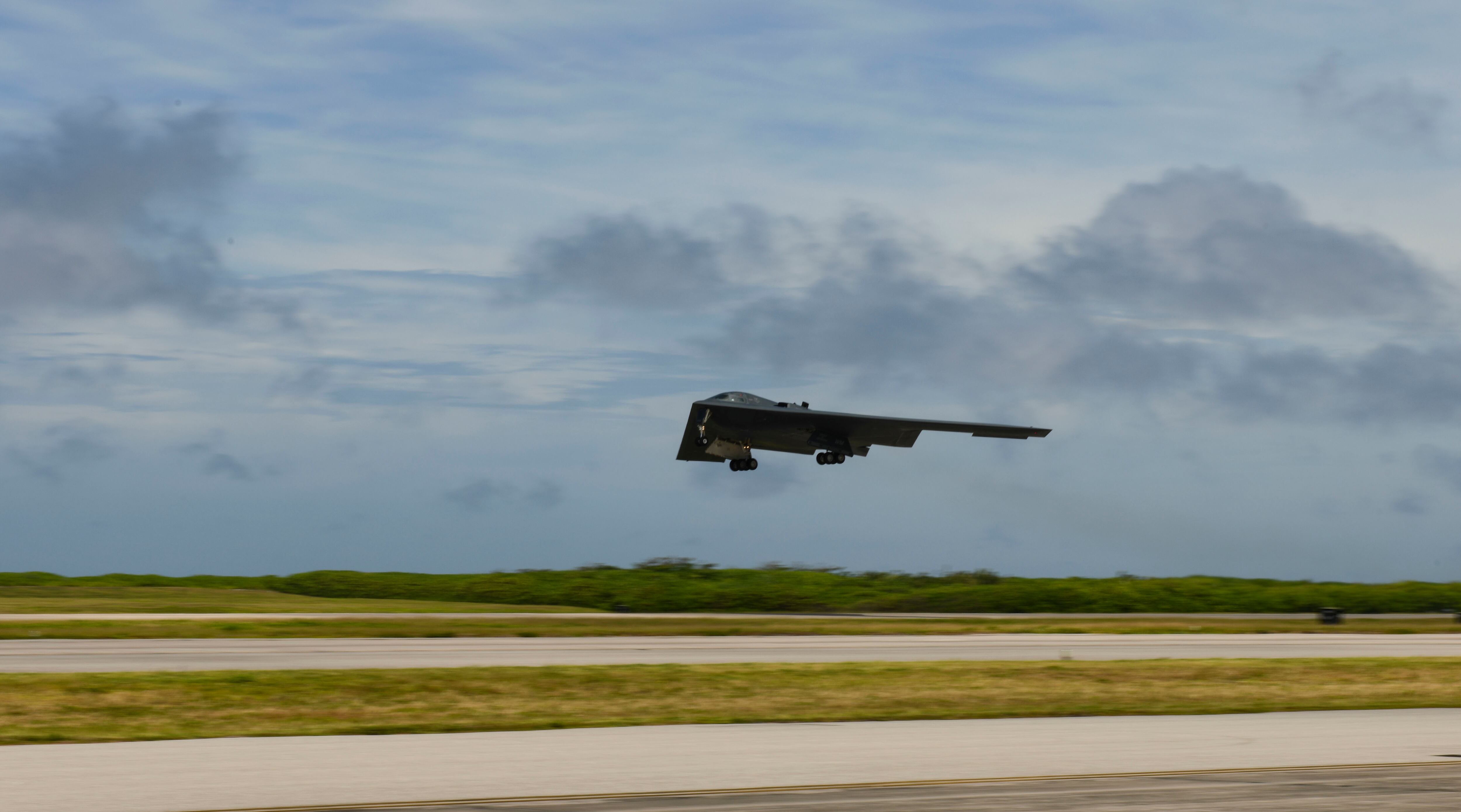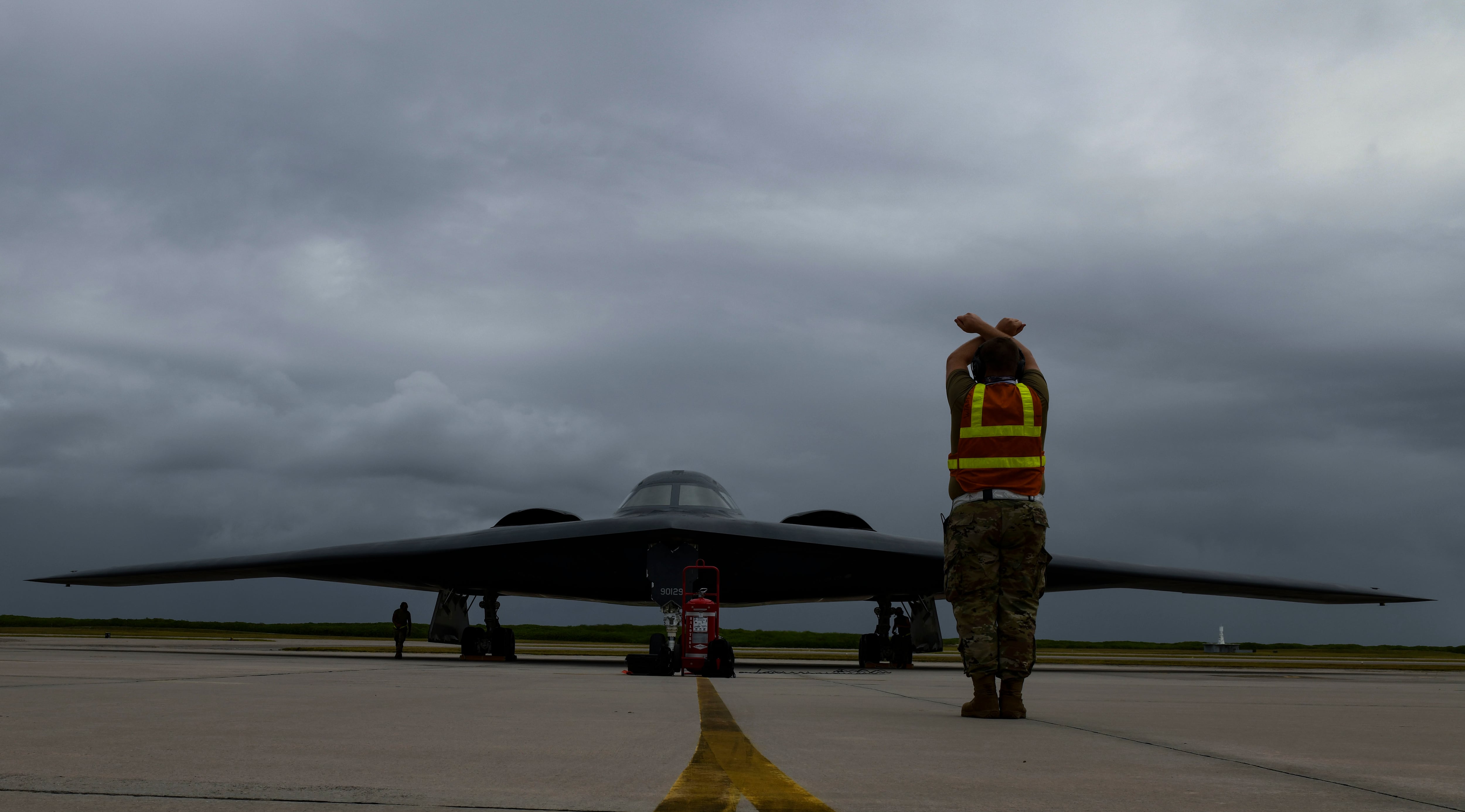B-1B Lancer and B-2 Spirit bombers from across the Pacific region trained with Australian troops and U.S. Marines during exercises in Australia last month.
The bombers conducted a series of sorties throughout August as part of a combined task force with the Australian Defence Force and Marine Rotational Force–Darwin, Pacific Air Forces said in a Thursday news release.
In the exercises, the forces practiced how a small naval expeditionary force would quickly deploy, link up with allies, coordinate airstrikes and call for close air support on targets in battle.

“It’s imperative that the U.S. Marine Corps and Australian Army work together,” said Australian Army Sgt. Aaron Costes, a joint terminal attack controller with the 102nd Coral Battery, in the release. “It’s such a feat that we can infill and have an aircraft come in from such long distances.”
B-2s from the 393rd Expeditionary Bomb Squadron — which is part of the 509th Bomb Wing — deployed from Whiteman Air Force Base to Naval Support Facility Diego Garcia Aug. 12. They then flew multiple 4,000-mile sorties from the Indian Ocean island to Australia, PACAF said. They operated over the Delamere, Bradshaw and Mount Bundley training areas in North Australia.
RELATED

Joint terminal attack controllers from the Marines and Australian forces coordinated airstrikes with the B-2s, as well as B-1s from the 37th Expeditionary Bomb Squadron, the release said. The B-1 squadron deployed to Andersen Air Force Base in Guam July 17.
Those aircraft then shifted to tactical units to practice dynamic targeting, in which the bombers carried out airstrikes on unplanned and unanticipated targets. This kind of targeting is important in battle, when the situation can change quickly and in unexpected ways.

The B-2s conducted low passes to provide air-to-ground coverage for the Marines, who called in air strikes using both traditional and modern forms of target location and communication, the release said. The B-2s at times dropped live munitions to demonstrate their precision strike abilities, PACAF said.
The JTACs also worked with Australian TIGER ARH armed reconnaissance helicopters and Marine Corps RQ-21A Blackjacks to identify and track simulated targets, the release said.
Stephen Losey is the air warfare reporter for Defense News. He previously covered leadership and personnel issues at Air Force Times, and the Pentagon, special operations and air warfare at Military.com. He has traveled to the Middle East to cover U.S. Air Force operations.




